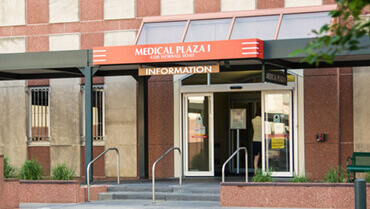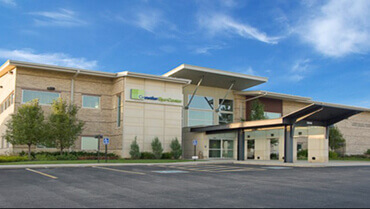Eye-Opening Facts About Blepharoplasty
Posted by: Eyesthetics at Sabates Eye Center in Blepharoplasty on August 27, 2021
If you have excess, drooping skin on top of your eyelids or can no longer cover up the sagging bags underneath your eyes, it may be time to consider blepharoplasty. Also commonly referred to as an eyelid lift, this procedure is not only effective for improving the appearance of the eyes, but it can also help men and women in Kansas City look more youthful and well-rested.
As we age, the eyelids begin to droop. More than merely a cosmetic issue, this may impact your vision and limit your ability to perform some activities. In most cases, an incision can be made on the upper eyelid to remove excess fatty tissue as well as tighten loose skin. And getting rid of those bags of tissue and fat under your eyes to allow for a softer and flatter look? That’s doable too. The dramatic results of blepharoplasty can help patients look and feel younger. Our physicians are fellowship-trained facial plastic surgeons with extensive experience performing eyelid lifts on men and women in the Kansas City area. Learn eight facts about the benefits of blepharoplasty and how you too can have a more awakened and rejuvenated appearance.
1. It is extremely popular.
Derived from the Greek words blepharon (meaning “eyelid”) and plasin (“to form”), more than 206,0000 blepharoplasties were performed in the U.S. in 2018, making it one of the most common cosmetic surgery procedures.
2. Both the upper and lower eyelids can be treated.
Besides addressing drooping upper eyelids, blepharoplasty is also effective for correcting bags and crepey skin below the eyes. When excess fat beneath the eyes is removed, a more natural, smooth look can be achieved. Under-eye puffiness can cast a shadow on the area and often is at least partially to blame for the appearance of dark circles. (Dark pigment in the skin may also cause this.) Once the shadows are eliminated, this dark look may also be improved to some degree. Our doctors will work closely with patients to determine whether their aesthetic goals can be achieved with either an upper or lower eyelid lift, or in some cases, both.
3. You can remain awake during surgery.
At Eyesthetics Eyelid, Face & Aesthetic Surgery, blepharoplasty procedures are performed with twilight anesthesia. Patients are not unconscious, rather they are deeply sedated so that they remain extremely comfortable, relaxed, and possibly feel a bit sleepy during their procedure. Following your surgery, you will “wake up” with little or no memory of the procedure. With twilight anesthesia, patients tend to experience a speedier recovery.
4. Your scars may not be visible.
Concerns about potential scarring are often cited as a reason why men and women avoid eyelid lift surgery. However, incisions made by our highly experienced surgeons, typically follow the natural creases of the eyelid. This works to camouflage scars, which over time may fade and can eventually become invisible.
5. The surgery may improve your vision.
While most cosmetic surgeries are requested by patients so that they may look better, blepharoplasty may also help you to see better. Sagging skin that droops over or around the eyes can make it more difficult to view objects in your field of peripheral vision. Following an eyelid lift, this should be corrected, and you will have a clear view of sight once again.
6. Surgical risks are relatively low.
There are risks involved with any type of surgery. In general, however, the risks associated with blepharoplasty are considered minimal. Following the procedure, it is not uncommon for patients to experience some temporary pain, bruising, and swelling around the eyes, which usually can be alleviated with cold compresses.
Other potential risks may include infection and bleeding, a change in sensation, an adverse reaction to the anesthesia that is used, and an accumulation of fluid or blood beneath the skin that may need to be removed. By selecting our highly qualified fellowship-trained facial plastic surgeons, such as Dr. Matthew Sniegowski or Dr. David Lyon, and closely adhering to the post-surgical instructions that are provided, patients may minimize the risk of experiencing complications.






